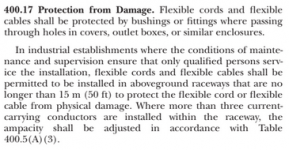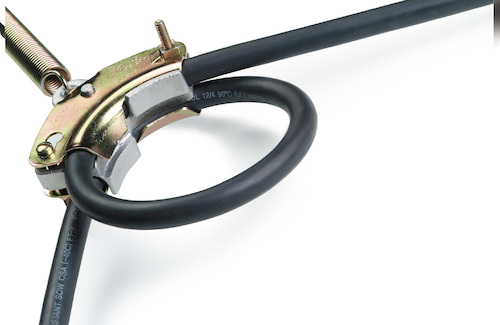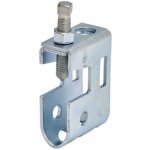kolyur
Member
- Location
- Wooster, Ohio
- Occupation
- Controls Engineer
We need to have power available on some workbenches. The benches are on locking casters, so they are generally kept in the same locations but can be moved if necessary. The plan is to run SO cord from breaker, with proper strain reliefs, to a twist lock hanging over the bench. The mating plug will run to a 4sq box which is mounted to the side of the workbench.
Our safety manager is telling us that this is a pendant application, and as such the box needs to be a type with a hub so a strain relief can be threaded into it per 314.23(H)(1). I don't see a definition for "pendant" in the NEC but I have always assumed it to be a situation where some electrical assembly is supported solely by its attached cord. That is not the case here, as the workbench is providing the support (although not part of the structure which would disallow the use of cord). On the other hand, if someone gave the bench a push it could end up yanking the cord where it enters the box, which I suppose is the purpose of the beefier strain relief requirements for pendants.
Just wondering how others have interpreted this?
Our safety manager is telling us that this is a pendant application, and as such the box needs to be a type with a hub so a strain relief can be threaded into it per 314.23(H)(1). I don't see a definition for "pendant" in the NEC but I have always assumed it to be a situation where some electrical assembly is supported solely by its attached cord. That is not the case here, as the workbench is providing the support (although not part of the structure which would disallow the use of cord). On the other hand, if someone gave the bench a push it could end up yanking the cord where it enters the box, which I suppose is the purpose of the beefier strain relief requirements for pendants.
Just wondering how others have interpreted this?






